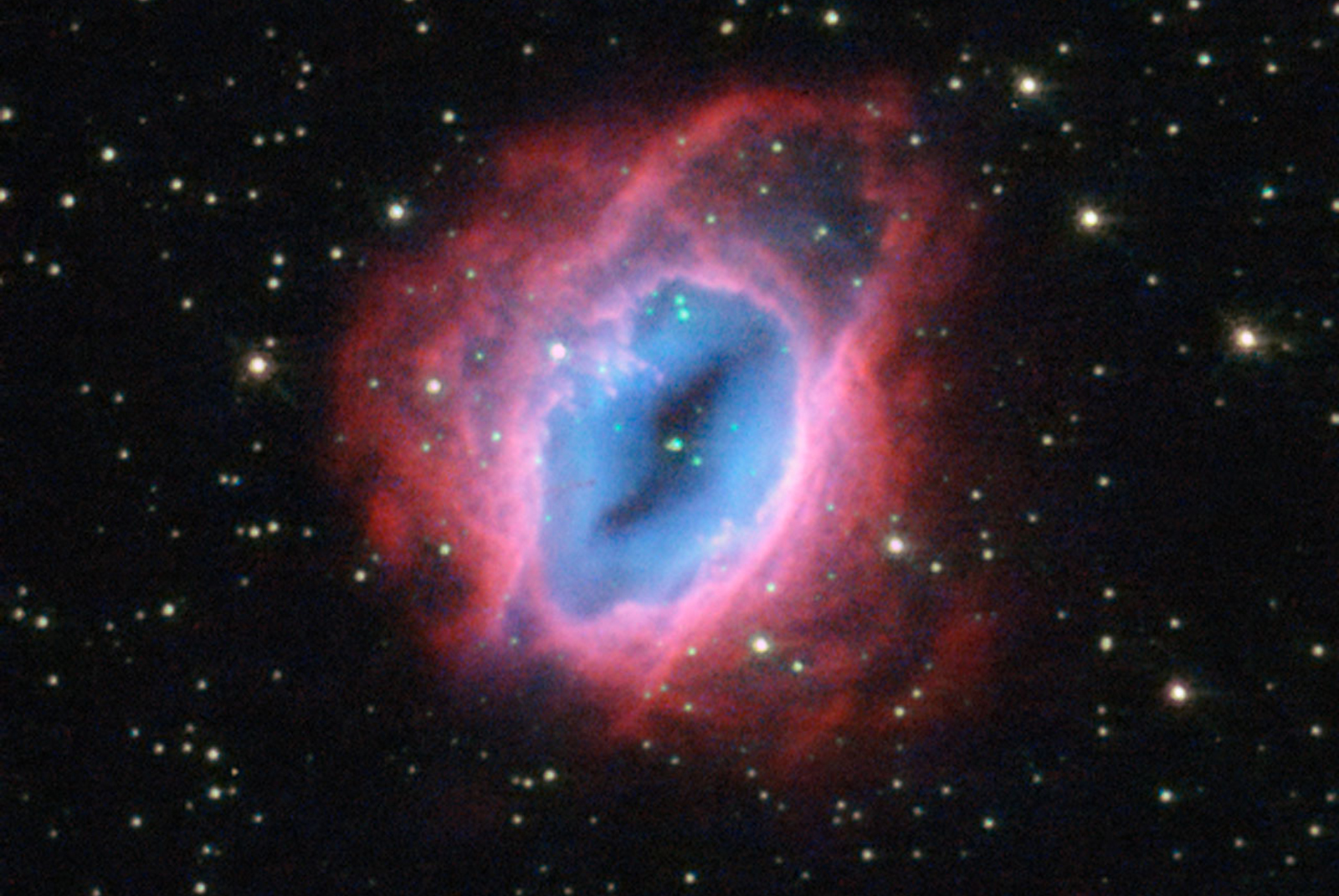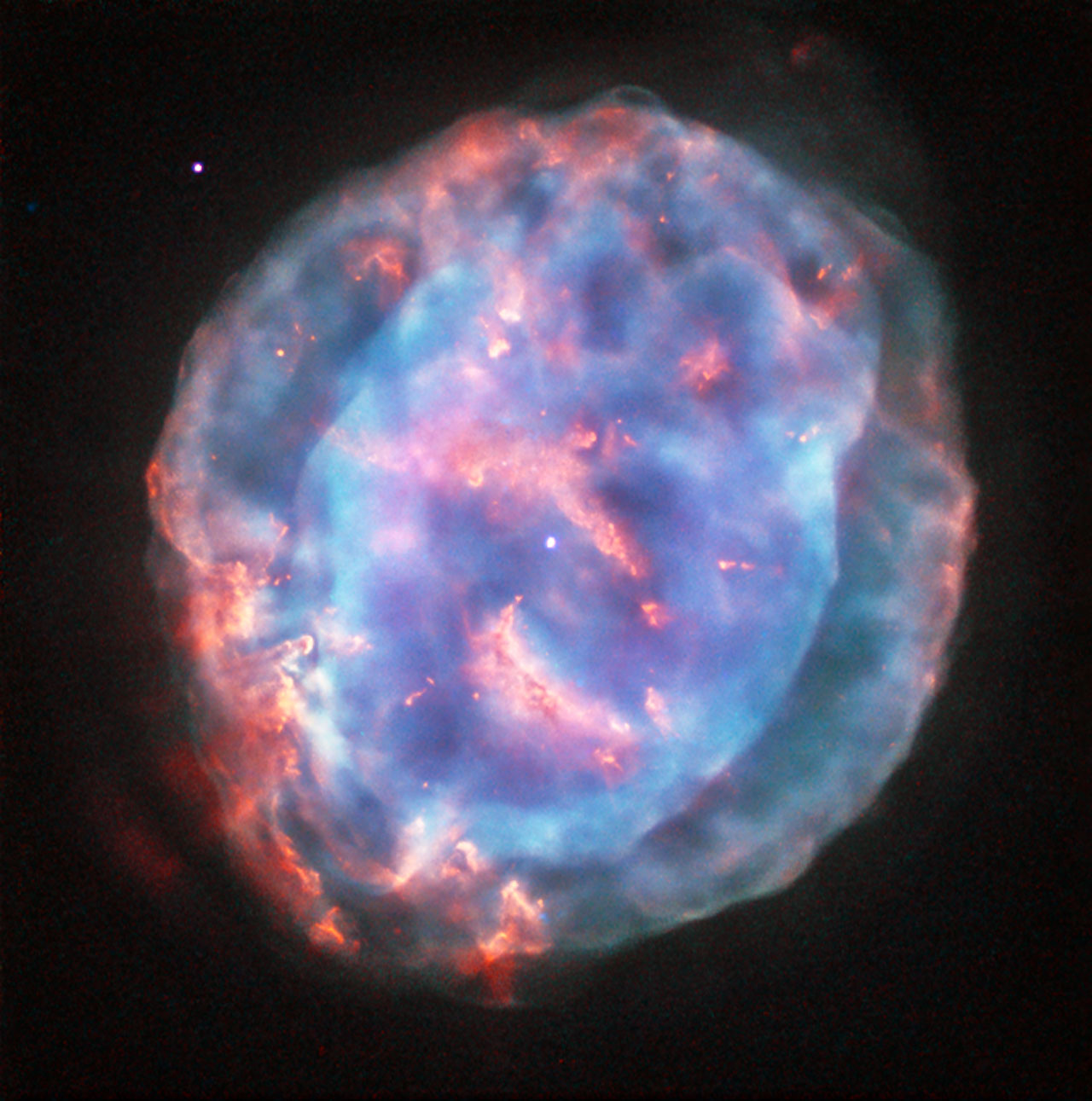When stars die, they leave behind beautiful wispy clouds of gas known as planetary nebulae – or, more poetically, “ghost stars”. These only last tens of thousands of years, compared to the billions of years most stars survive, but ten years ago a strange pattern was found amongst them. A new study indicates close binary companions are a crucial part of the process, although the ultimate cause remains unknown.
Planetary nebulae have nothing to do with planets – the name was assigned before we had any idea what they were. Instead, they are clouds expelled as stars too small to become supernova approach the end of their lives. The planetary nebulae visible from Earth represent the remains of a random assortment of stars that all died recently, but would have been born at very different times. Some are very old stars similar in size to the Sun, others a fair bit larger that went through their life cycles much more quickly.
Consequently, we would not expect to find nebulae lining up – yet that is just what Dr Bryan Rees reported ten years ago as a PhD student at Manchester University. Now, he’s an author of a new paper that goes some way to explaining the oddity he brought to light.
Rees noticed that planetary nebulae near the Galactic Bulge have major axes disproportionately orientated almost parallel to the plane of the Milky Way, as if some galactic-scale force was pulling them into line.
Planetary nebulae come in various shapes, and not all have a principal axis, but those that are either elliptical or bipolar (butterfly-shaped) do, and these are common.
The new study confirmed Rees’ observation with a larger sample. However, the authors also found an additional clue Rees had missed on the first pass: the alignment only occurs among planetary nebulae where the star that made them was part of a close binary system.

Sometimes when you watch the universe, you get the feeling the universe is watching you back. ESO 456-67 certainly gives that impression.
Image Credit: ESA/Hubble and NASA
The planetary nebulae are not the only remnant of the original stars – a white dwarf sits at the heart of each one. The companion star continues to orbit the white dwarf, and in every aligned case that orbit is smaller than that of Mercury.
“The formation of stars in the bulge of our galaxy is a complex process that involves various factors such as gravity, turbulence, and magnetic fields. Until now, we have had a lack of evidence for which of these mechanisms could be causing this process to happen and generating this alignment,” said study author Professor Albert Zijlstra of the University of Manchester in a statement. “The significance in this research lies in the fact that we now know that the alignment is observed in this very specific subset of planetary nebulae.”
The nebulae often extend beyond the orbits of the companion stars, meaning the companions are in a sense orbiting inside their primaries, or at least their primaries’ ghosts. The authors propose the rapid orbital motion of the less massive star shapes the nebula.
Rees based his original assessment on 130 planetary nebulae using images taken by the Hubble Space Telescope. The new study re-examined forty of these and confirmed Rees’ analysis, and added 136 more, imaged by the European Southern Observatory Very Large Telescope. The sample is comfortably large enough to prove the alignment is not a matter of chance.

If you’re going to be trying to solve a cosmic mystery, it probably helps if your subjects are this beautiful. The little gem nebula NGC 6818
Image Credit: ESA/Hubble and NASA
Important as the discovery of companion involvement is, it still leaves the big question unanswered – what mighty force is operating across such a vast area to make the nebulae align? Something must be causing the companions’ orbits to be orientated relative to the galactic plane in a way that makes the nebulae align, and we still don’t know what that is, although the paper discusses magnetic fields as a possibility. The answer may help us understand how the Galactic bulge itself formed.
The study is open access in The Astrophysical Journal Letters
Source Link: Close Companions Make Ghost Stars Align With The Galactic Plane